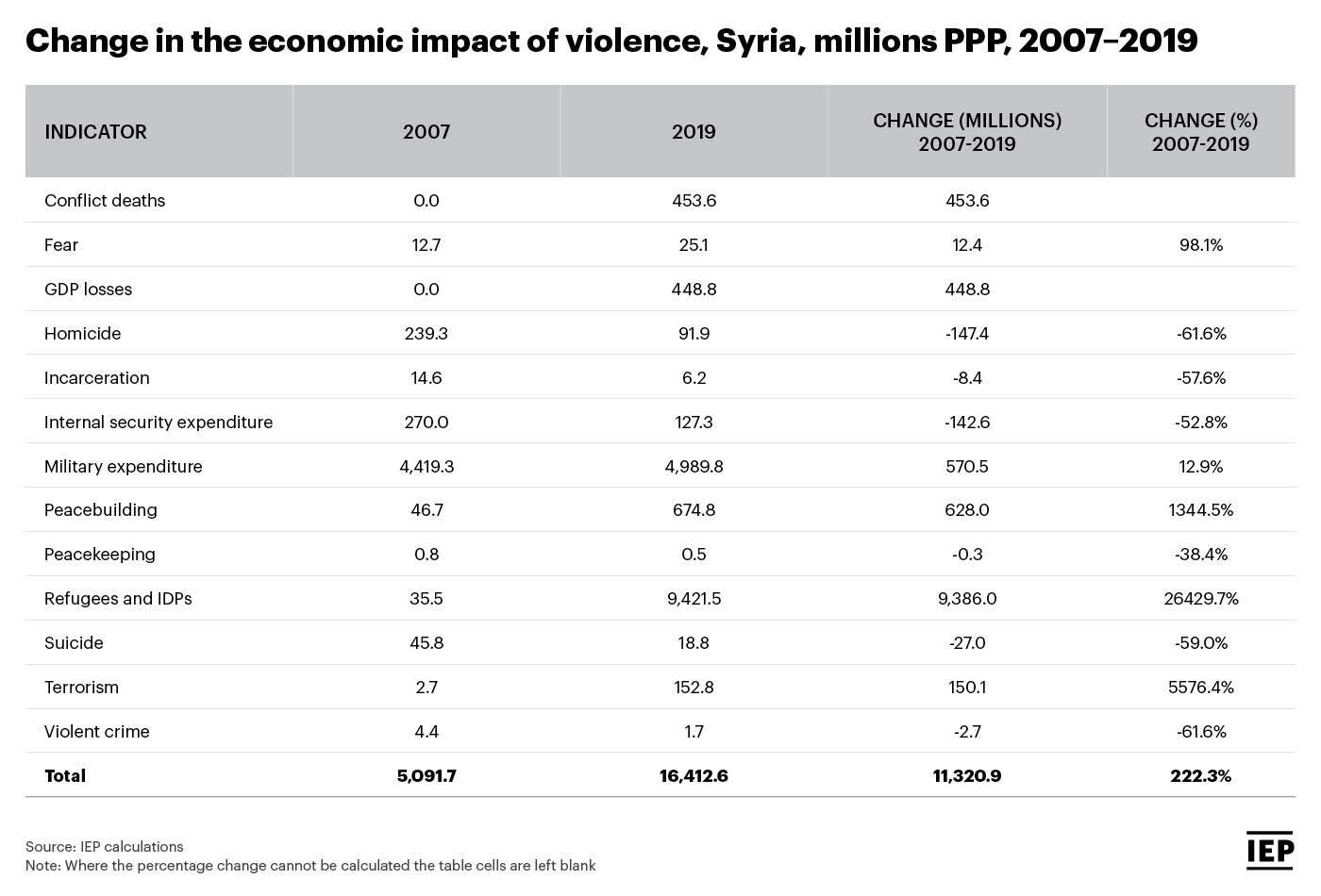Research shows the devastating economic impact of the war in Syria. The conflict-inflicted damage on infrastructure alone cost US$ 117.7 billion.
The 2021 Economic Value of Peace report revealed the global economic impact of violence to be $14.4 trillion in purchasing power parity terms, but the reality of this enormous economic toll is better comprehended with real world examples.

Since 2011, the ongoing conflict in Syria has led to what the United Nations High Commissioner for Refugees describes as “the biggest humanitarian and refugee crisis of our time.”
Syria provides an example of the grave consequences of conflict on a country’s economy. By 2018, Syria’s GDP had been reduced to less than 50% of its 2010 level, driven by the consequences of conflict and political instability.
The level of destruction has inflicted significant damage to the nation’s physical capital. Since the start of the civil war, 17.5% of the nation’s housing has been destroyed and estimates put the conflict-inflicted damage of infrastructure at US$ 117.7 billion.
This is approximately double Syria’s gross domestic product (GDP) in 2010. This level of destruction will have implications on Syria’s economic recovery and long-term economic growth.
A scenario analysis that compares the GDP Syria would have achieved in the absence of conflict indicates that the accumulated losses from the conflict are at US$324.5 billion. This reaches US$442.2 billion with the inclusion of infrastructure destruction. Syria’s GDP in 2019 was only US$19.5 billion.
A combination of destroyed infrastructure and reduced production and trade embargoes resulted in a reduction in Syrian exports. From 2010 to 2018, exports fell from $8.7 billion to $0.7 billion, a decrease of 92%. The collapsed export trade resulted in Syria’s trade deficit widening from -16.6% of GDP to -34.6% over the same period. In addition, Syria’s currency depreciated 90% and inflation reached 700%.